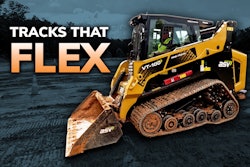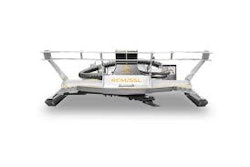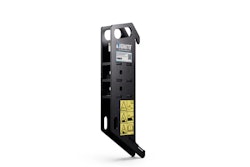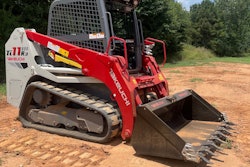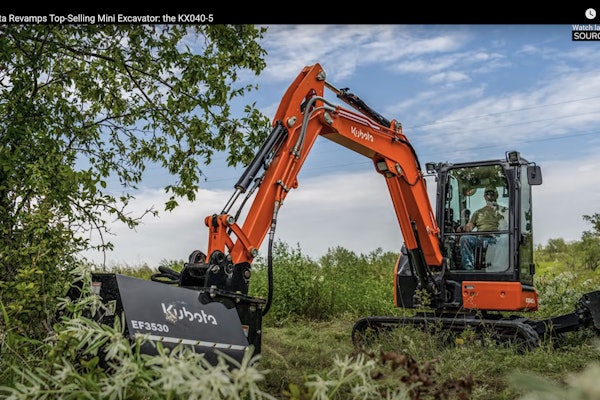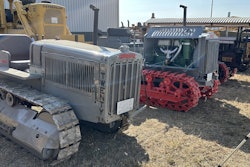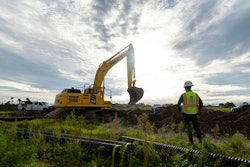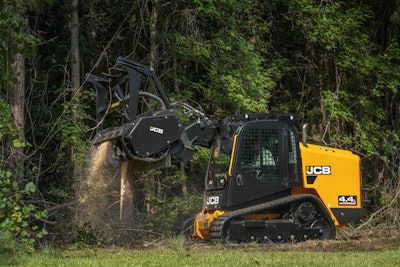
Fans of JCB’s compact track loaders and its innovative Teleskid, a CTL with telescopic boom, have for years hit a threshold of 74 horsepower.
The company viewed it as the sweet spot for its compact loaders, delivering plenty of power but without the costly diesel exhaust fluid and diesel particulate filter demanded of larger engines to meet Tier 4 Final emissions requirements.
But after three years of hearing from customers, the company has responded with its new 109-horsepower 400T compact track loader and 4TS tracked Teleskid. Along with the increased engine power, operators will get more hydraulic flow for running large attachments like forestry mulchers and snowblowers, as well as more torque.
Those who choose the 4TS Teleskid, with its 15 feet of lift height and 8 feet of forward reach could potentially replace a compact telehandler on a jobsite. JCB also enabled it to achieve max attachment hydraulic flow while the boom is extended.
“The consistent feedback was … we need more horsepower,” says JCB Product Manager Lee Tice. “We need more hydraulic flow, more push power, all these things. So that's what really prompted this.”
Getting to 109 Horsepower
 JCB's 4TS Teleskid has a telescopic boom height of 15 feet and reach of 8 feet. JCB
JCB's 4TS Teleskid has a telescopic boom height of 15 feet and reach of 8 feet. JCB
“That's a horsepower that JCB understands very well,” he says. “It only seemed right to put it into the compact track loaders when the time came.”
Along with the increased horsepower comes 380 foot-pounds of torque. “That is massive. We're pretty sure that no other competitive machine has this much torque.”
Both models can also dig 3 feet below grade.
Though there’s more power and torque, the weight and dimensions are similar to the current tracked 3TS Teleskid, keeping the width at 6.5 feet and roof height at about 6 feet. The company did add about 7 inches to the undercarriage’s length to fit the additional aftertreatment components required of a larger Tier 4 Final engine with DEF and DPF.
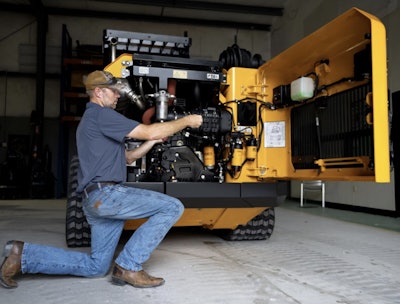 JCB
JCB
“So a big thing for the customers that are running these hydraulic attachments is cooling of your hydraulic system,” Tice explains. “We don't want the customer to have to go out and buy auxiliary coolers to put on these machines.”
Tice says the new cooling system has been tested in triple-digit temperatures in Georgia, Texas and Nevada and showed no signs of overheating. “Our engineers did a very good job of designing the cooling system to support that additional hydraulic flow, eliminating the need for auxiliary coolers, which I think is going to be a big selling feature for us.”
Multipurpose Machine
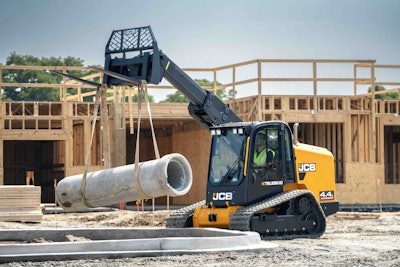 JCB's 4TS Teleskid could replace a compact telehandler on jobsites.JCB
JCB's 4TS Teleskid could replace a compact telehandler on jobsites.JCB
“A lot of our competitors’ compact telehandlers stop at 18 feet,” Tice says. “So we're really in that dual-purpose machine.”
He notes that with the 4TS also having tracks, it can maneuver in softer terrain for material-handling operations.
Another benefit of the 4TS is its ability to deliver high flow to attachments when the boom is extended. Those working in land clearing or forestry could extend a rotary cutter or mulching head to the top of a tree up to 15 feet tall and work down, increasing efficiency.
Smooth Ride and No Boom Drift
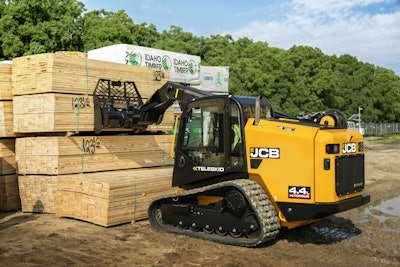 JCB 4TS TeleskidJCB
JCB 4TS TeleskidJCB
The new 4TS eliminates or significantly reduces that with its new hydraulic system and valve body, Tice says.
JCB also gave the 4TS and 400T its manual Smooth Ride and Auto Smooth Ride, but with some changes to make it easier for operators.
On the manual Smooth Ride, operators can engage it on the fly from the menu to use when traveling between loading and unloading to keep material from spilling. Unlike the previous system, they don’t have to lower the boom all the way down to engage it. Now, it can be engaged in any position.
For even more convenience, Auto Smooth Ride will take care of engaging and disengaging the feature automatically at a set speed. As an example, when heading into a pile of material, you want the boom to be stationary and not floating. With Auto Smooth ride, after you’ve loaded the material and turned around, it will automatically engage once you hit the preset speed.
“It really makes it effortless for the operator that's doing that kind of repetitive application,” Tice explains. “He's not having to go up into the menu and press a button each time he grabs that load.”
Inside the Cab
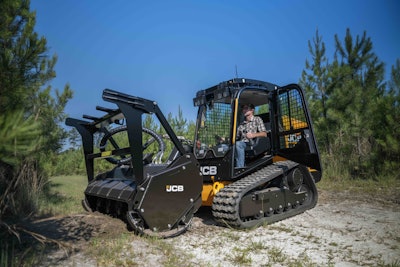 JCB 400T compact track loaderJCB
JCB 400T compact track loaderJCB
“We now have multiple modes of hydraulic flow, so it's no longer that standard flow, high flow,” Tice says. “We now have standard flow, high flow and then two modes of super flow.” Max flow is 41 gallons per minute at 4,000 psi.
Another new menu item is Hill Hold, which prevents unwanted movement when working on inclines and slopes. “If we are running a brush cutter down on a pond bank, the machine doesn't roll.”
Attachments can be changed from the cab with JCB’s standard electrically actuated hitch. “Basically what that does is eliminate the leak point inside of that quick hitch, so we don't have hydraulic lines running up into the quick hitch of the machine for the actuation,” Tice explains.
“Our quick-hitch design is 100% enclosed,” he adds, preventing debris from entering it.
The coupler system can run any competitors’ attachments.
JCB also added premium LED lighting for working at night and early mornings.
400T vs. 4TS
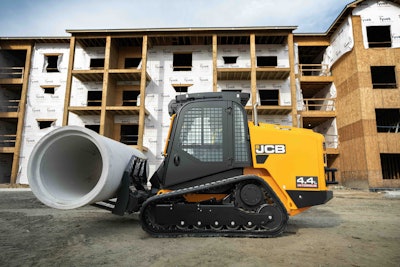 JCB 400TJCB
JCB 400TJCB
“It's the best of both worlds. The 4TS does everything the 400T does, but then you have that additional capability of a telescopic boom.”
The 400T is primarily for those who want to stick with the traditional fixed-boom compact track loader. “That 400T is kind of the entry-level unit. The 4TS is a step up from that.”
Both 400T and 4TS are production ready and being built in Savannah, Georgia. Dealers began taking preorders in June. The company’s official public launch of the two models was at today’s Farm Progress Show in Decatur, Illinois.
“We've already built the entire pipeline for 2025 and started into 2026,” Tice says.
“… We think we've got a good balance of performance and machine size here. This is going to be really popular. We're extremely excited about it.”





